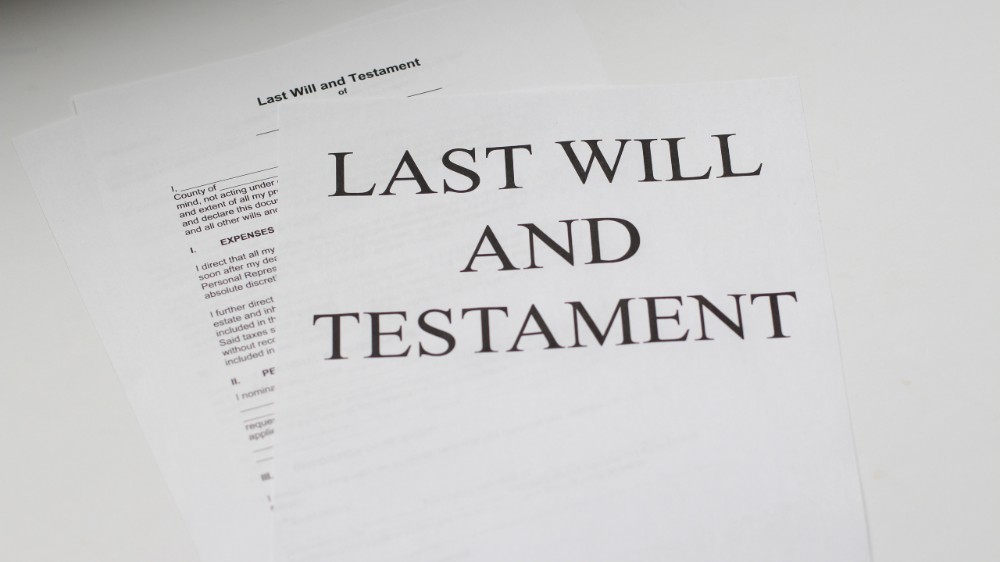Cryonics is the “practice of preserving life by pausing the dying process using subfreezing temperatures with the intent of restoring good health with medical technology in the future.” Cryopreservation has gradually become popular, and since it is set to question the very phenomenon of death, cryonics presents a number of legal challenges, one of which is the disposal of assets of the cryonically suspended. While actually reviving those who are cryopreserved may well be a question for science to answer, the management and planning of their estate falls under the jurisdiction of the law. This article will explore some of the ways in which the estate of a cryopreserved person can be held or managed, so as to ensure that they are not left penniless upon reanimation.
The Conundrum
The estate, or the property, of a deceased person devolves according to either testamentary succession (as per the terms of a will executed by the person before death), or through intestate succession (in the absence of a will, the property devolves according to the applicable laws of inheritance). Since cryopreservation involves the hope of being able to revive the suspended, it complicates succession laws. This is because once the property devolves either through a will or through inheritance, the deceased, if he/she is successfully reanimated or brought back to life, will be left with nothing. This leaves the person desiring to be cryopreserved with no choice but to rethink their estate plans. They will have to essentially freeze their estate or part of it, as necessary, before being frozen themselves.
While the solution seems quite evident, the path that leads to it is full of various hurdles. This is due to the unpredictability of reanimation after cryopreservation. Although the practice of cryopreservation is slowly evolving, it is yet to reach a stage where those who are preserved can be reanimated. Due to this uncertainty, estate and inheritance laws are being put to the test, should anyone desiring to be cryopreserved want to save something for when they might be brought back to life.
Where there’s a will
Although cryopreservation is carried out with the hope of being able to revive the suspended, the death of that person is necessary to initiate the process. In fact, a death certificate forms the premise on which cryopreservation begins. Being legally “dead”, they are not entitled to retain their assets. Therefore, the person desiring to be cryopreserved should draw up a will for the disposal and “freezing” of their assets so that they have something to stand on, if and when they are reanimated. But how exactly can this be done?

Trusts
Creation of trusts for holding onto the assets of those who are cryopreserved has proven to be a universal solution to this problem. However, the creation of a trust for the purpose of freezing one’s assets is not the same as creating a trust under other circumstances. The beneficiaries of a typical trust are members who may not be equipped to take care of themselves, such as minors or people with disabilities. Contrastingly, when it comes to cryonics trusts, the ultimate beneficiary will be the creator of the trust itself (“Testator”). However, there are two major roadblocks in this regard.
Firstly, the Testator cannot put themselves as a beneficiary of the trust as they do not have a “legal living status”; a potential solution to this will be discussed later in the article. Secondly, the vesting of assets in a trust should not violate the rule against perpetuities. This rule bars the creation of perpetual trusts and is accompanied by a period of limitation. Since reanimation of the cryopreserved has not yet been possible, it is likely that the rule against perpetuity will be violated, at least in legal systems similar to India where this period extends only to eighteen years. According to most Australian laws, the period of perpetuity is eighty years, but this rule has been abolished in the state of South Australia.
In the United States, nearly 20 states have abolished the rule against perpetuities, however, this has also been significantly modified in states such as Florida (up to 360 years), Nevada (up to 365 years), and Wyoming (up to 1000 years). These modifications can be taken advantage of, and trusts can be created virtually. Although reanimation of cryopreserved persons is still a hope for the future, by creating a trust, the person’s assets can be held for as long as the relevant law permits, or forever if said law has been abolished. This provides the most realistic chance of ‘freezing one’s assets until they are revived’.
Types of Trusts
A typical trust requires a “Settlor” to create the trust, who then divides the “bundle of rights” in a property between the Trustee, who gets the legal title to it, and the Beneficiary, who is the equitable owner of the trust property. It is also necessary that the trust be constituted for a purpose that is not against public policy. A form of trust that fulfills these requirements, within the confines of cryopreservation, is the Personal Revival Trust (“PRT”). A PRT is a type of trust that is set up to hold assets for a person in cryonic preservation until they are revived.
This can be done through a combination of the “Undead Contingent Beneficiary Exception”, and the creation of a perpetual trust with revival as condition subsequent. The former is reliant on the possibility that one day the cryopreserved will be revived, and this creates a contingent future interest deserving of legal protection, and a court-appointed representative to protect that interest. The latter, on the other hand, involves the creation of a perpetual trust, which terminates upon revival of the cryopreserved. Due to the Settlor having the legal status of being “deceased”, they cannot be made beneficiary of the trust property as a beneficiary should be one who is ascertainable.
However, the issue with the “Undead Contingent Beneficiary Exception” principle is that the cryopreserved beneficiary must be considered “not dead”. The courts would not readily accept such a position, as the legal status of the cryopreserved is that of a “dead” person. This conundrum can be resolved with a slight modification. Instead of treating the cryopreserved beneficiary as “undead”, they could be seen as a different person “upon revival”. This not only prevents undue complications, but is also in line with the position of a “person who is once dead legally, cannot be considered to exist again”. Thus, the beneficiary of the constituted trust could be the “cryopreserved person upon revival”, coupled with a condition subsequent that the trust would terminate upon the successful revival of the cryopreserved. Upon termination, the funds would be transferred to the reanimated person, for their use, as was originally intended.

Therefore, a combination of these two mechanisms, with a slight modification, provides an effective way to “freeze” assets and carry them through time, along with the cryopreserved. However, under both these mechanisms, the cryopreserved individual, being “legally dead”, cannot be the sole beneficiary. This requires the inclusion of another beneficiary, which carries the risk that the trust can be terminated by this second beneficiary. Nonetheless, this could be prevented by naming the cryonics facility where they desire to be preserved as the only other beneficiary. Since the interests of these two parties are aligned, it is less likely that the trust will be unilaterally terminated. A prominent example of this is the Alcor Patient Care Trust.
Another layer of protection can be added to these trusts by appointing a Trust Protector. A Trust Protector is generally a neutral third party with specific legal or technical qualifications. This party will have the authority to oversee that the trust is not being misused and is being maintained solely for the benefit of the reanimated person. The Protector can also be bestowed with additional powers such as: removal of trustee; change of domicile; and other general amendments. All this has to be within the framework of the trust deed, and in keeping with the interests of the settlor.
Other Cryonics Trusts in Practice
Asset Preservation Trust aka Alcor Model Asset Preservation Trust: a “model trust”, which the desired persons can use as a framework to design their own such trust. This claims to provide the answers to all the legal questions. However, the minimum threshold limit to fund this revival trust is $500,000.
Alcor’s Multi-Investor Future Income Trust: a two-component trust, where the person desiring to be cryopreserved can “fund” the trust either with cash, or with liquidated assets. It is a relatively cheaper option, charging a one-time $5,000 fee for the preparation of the trust and other operational costs. Apart from this fee, the minimum trust amount should be $25,000. A unique feature of this trust is that it is not funded until the death of the person. The funds put into the trust are invested into MIFIT Investments Inc., in exchange for shares, during cryopreservation. Once the grantor is revived, the trustee will receive back the investments and administer the trust for the benefit of the revived individual.
Most of the problems that patients undergoing cryonic suspension encounter with asset preservation stem from the uncertainty associated with reanimation. Courts can rule against the creation of these trusts deeming their purpose an impossible one to achieve; relatives of the deceased not having faith in the process might pose another challenge to asset preservation.
These issues can only be clarified once advancements in the field of cryonics and any cogent evidence towards the possibilities of a revival can be produced. A strong case can only be made in favor of trusts, particularly for cryopreservation, so as to have a law enacted on it, when reanimation, or a strong possibility of it, can be proved. Until then, the creation of the aforementioned trusts seem to be the best way to ensure that the reanimated person will not be without any fortune upon their return to life.














